STOP WAR, LOVE LIFE
Print, Digital & Social Media Campaign
Client: Liberty University/ American Red Cross
Work: Creative and art direction Firas OtaBachi
Inspired by David Moscoso
Firas Bachi©2022
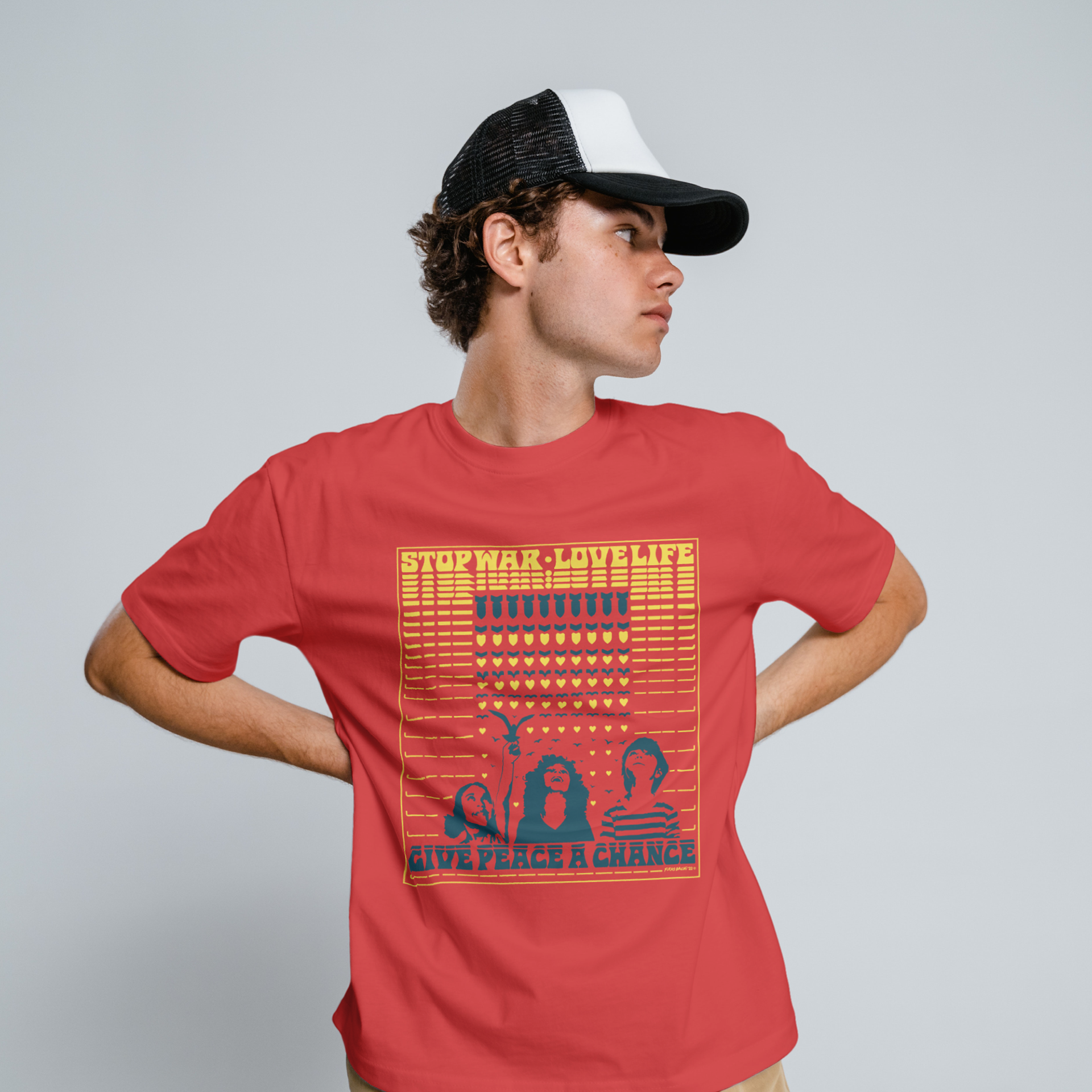
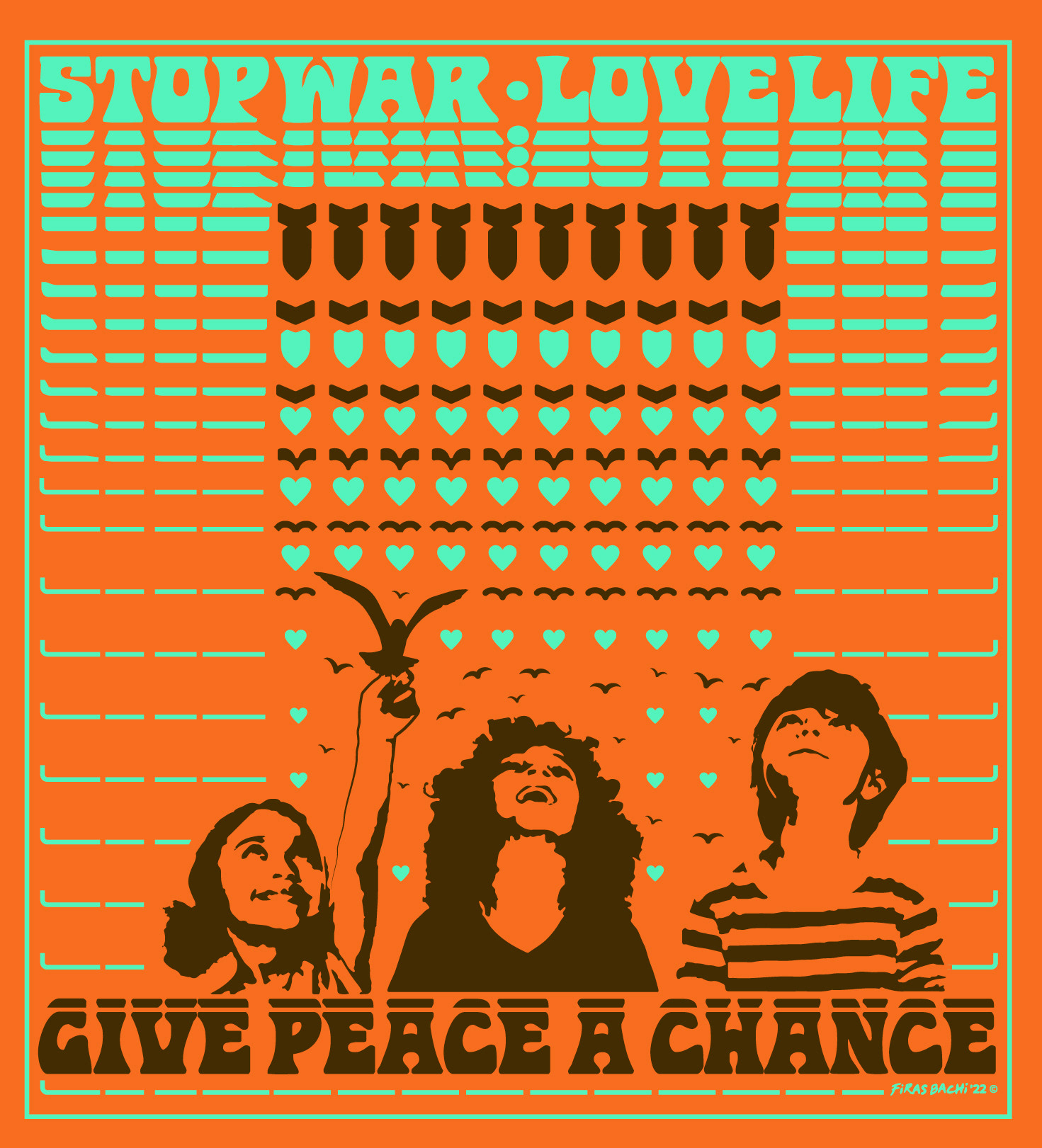

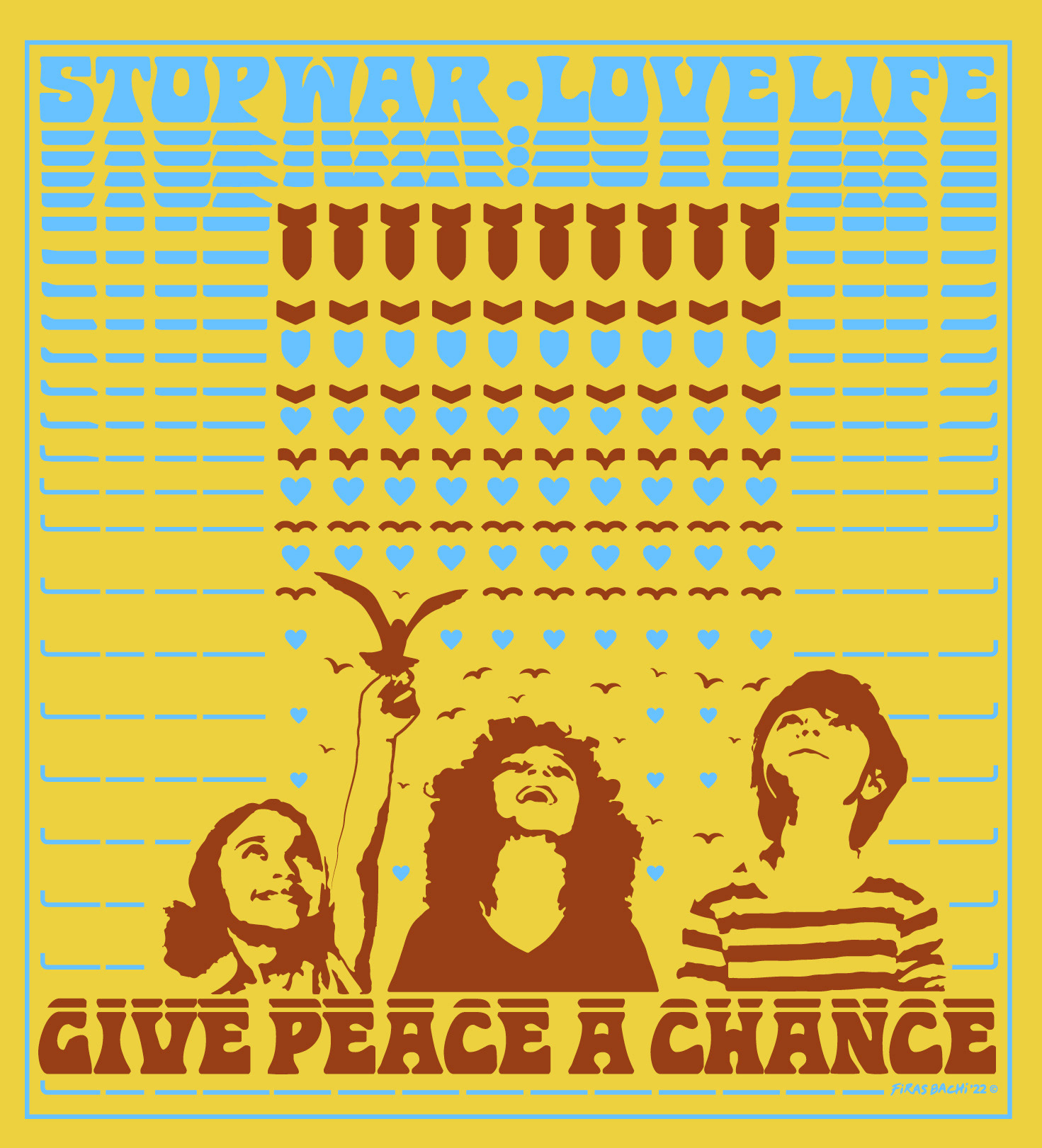
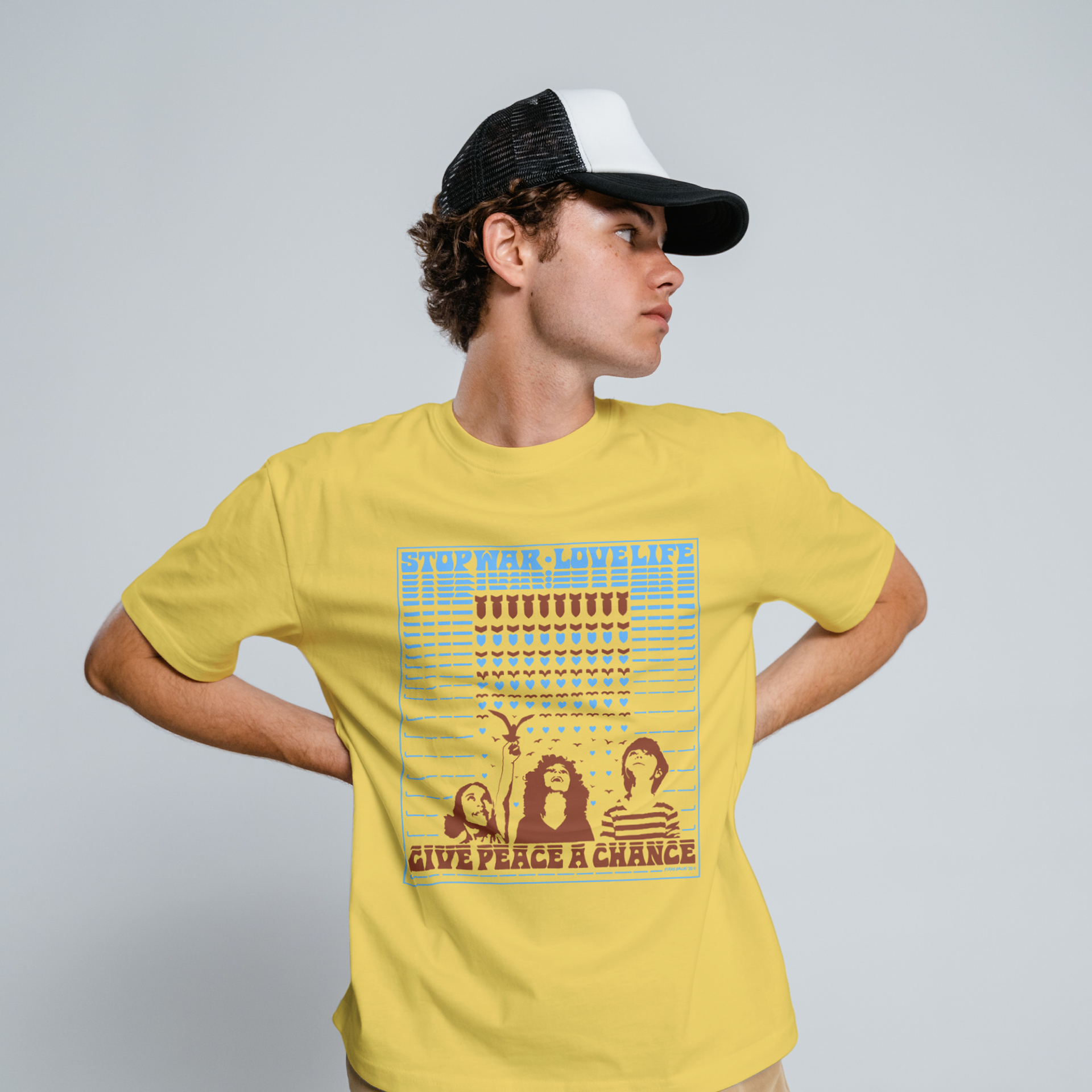
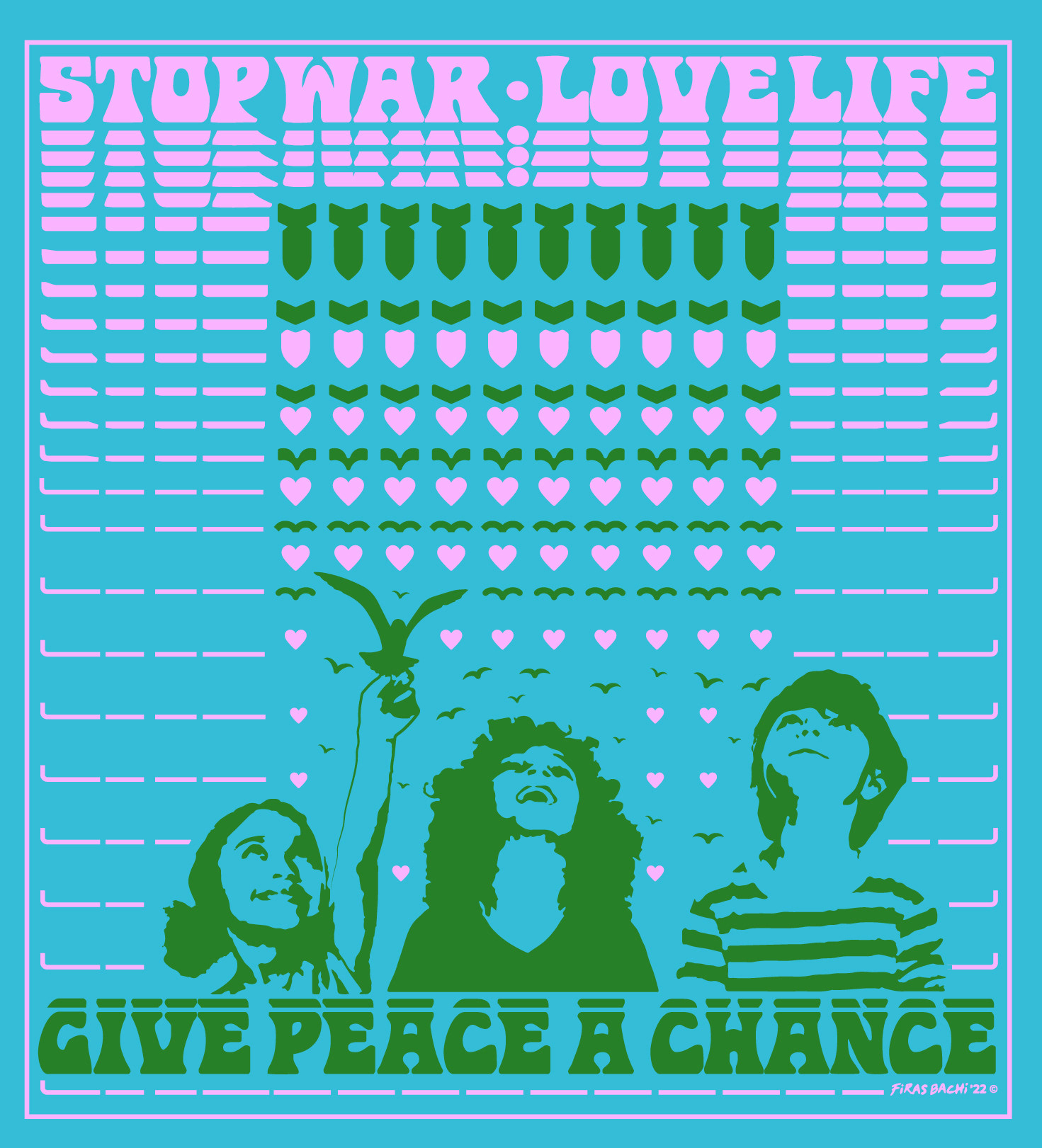
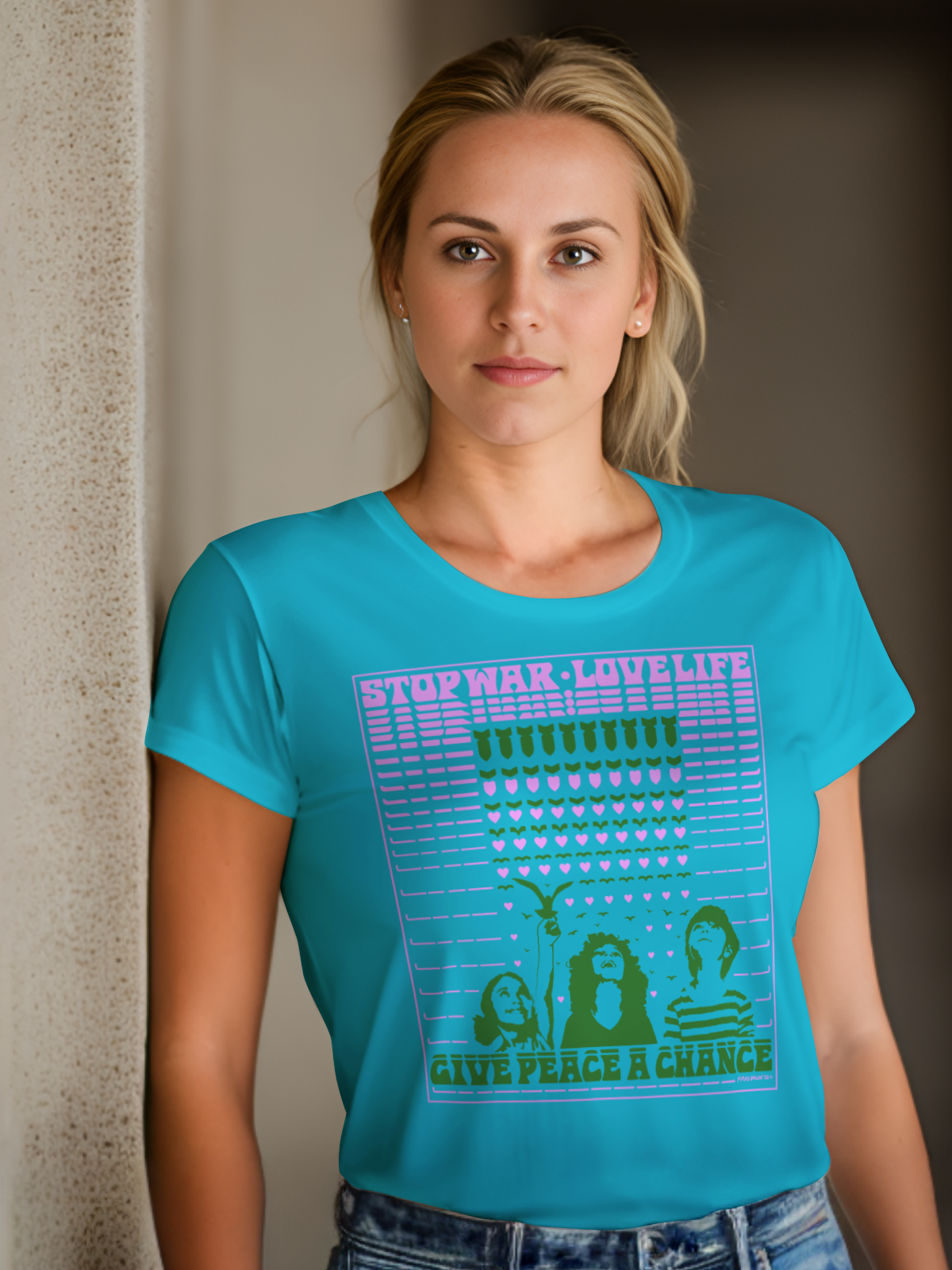
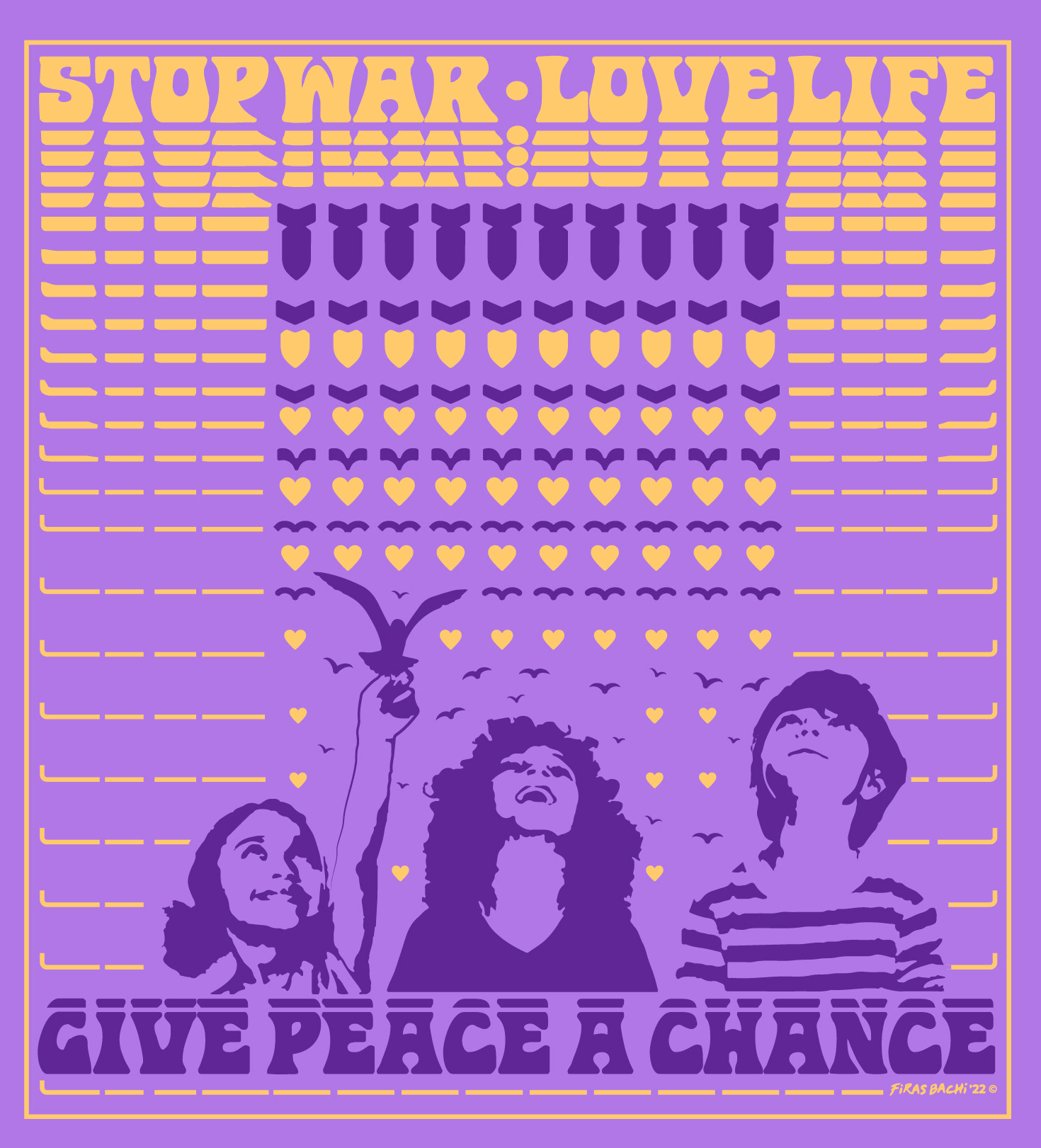
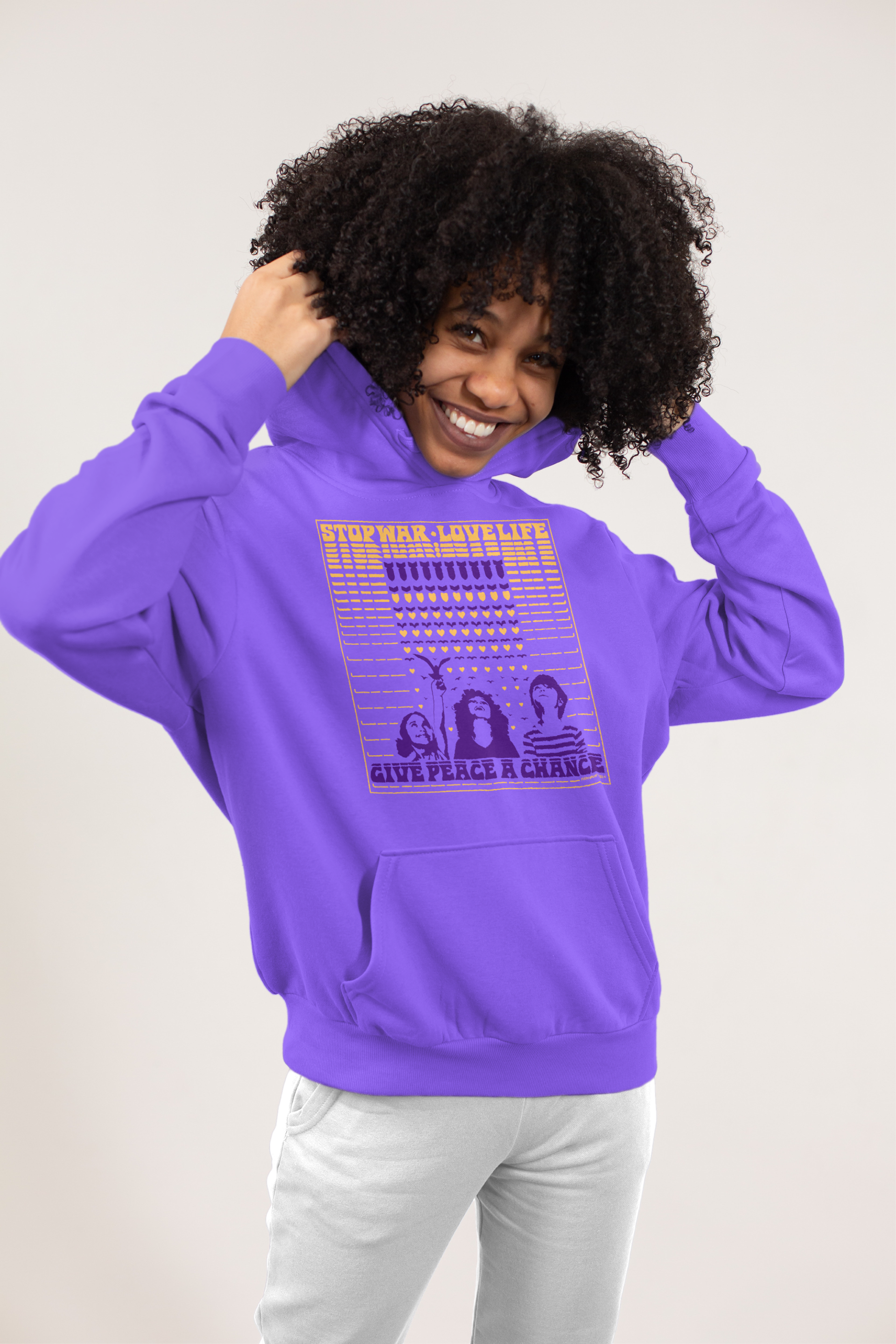
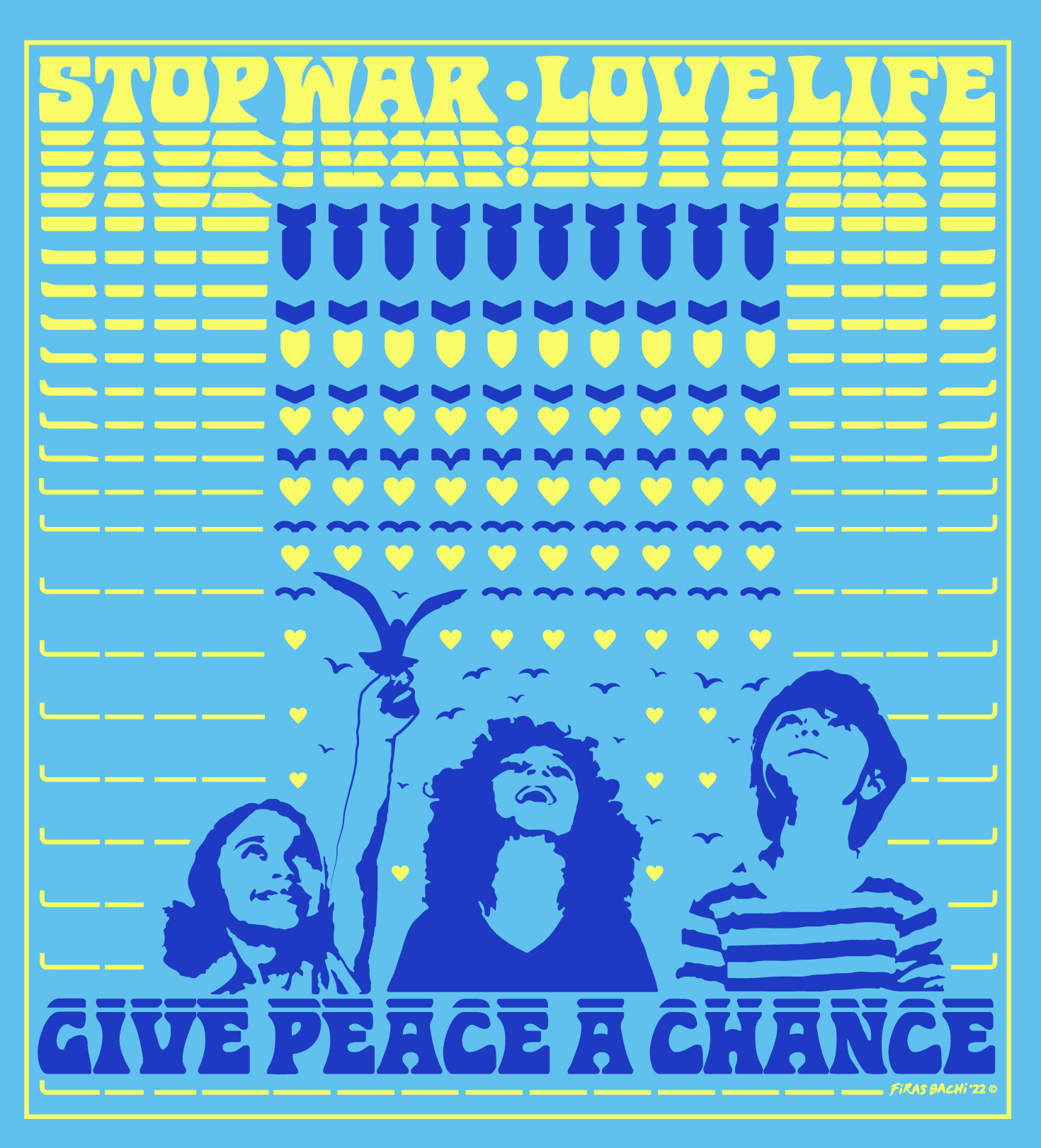



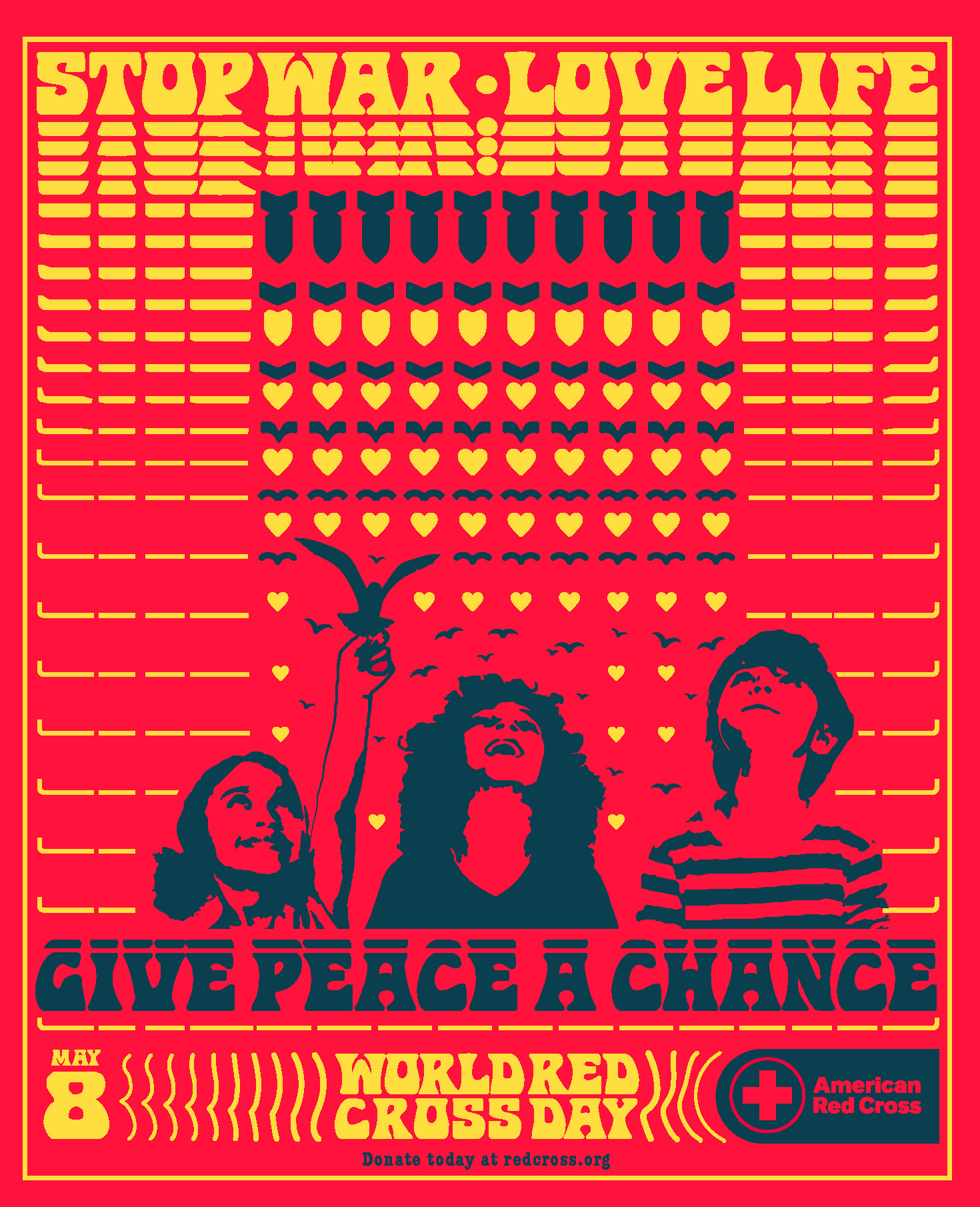
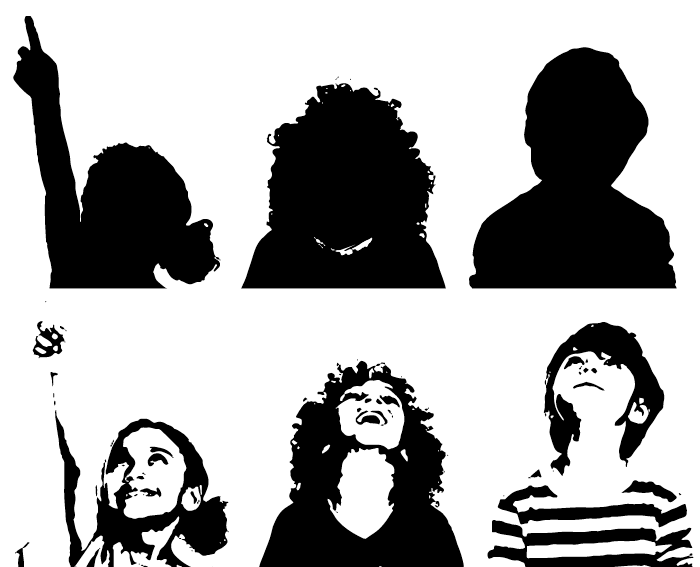

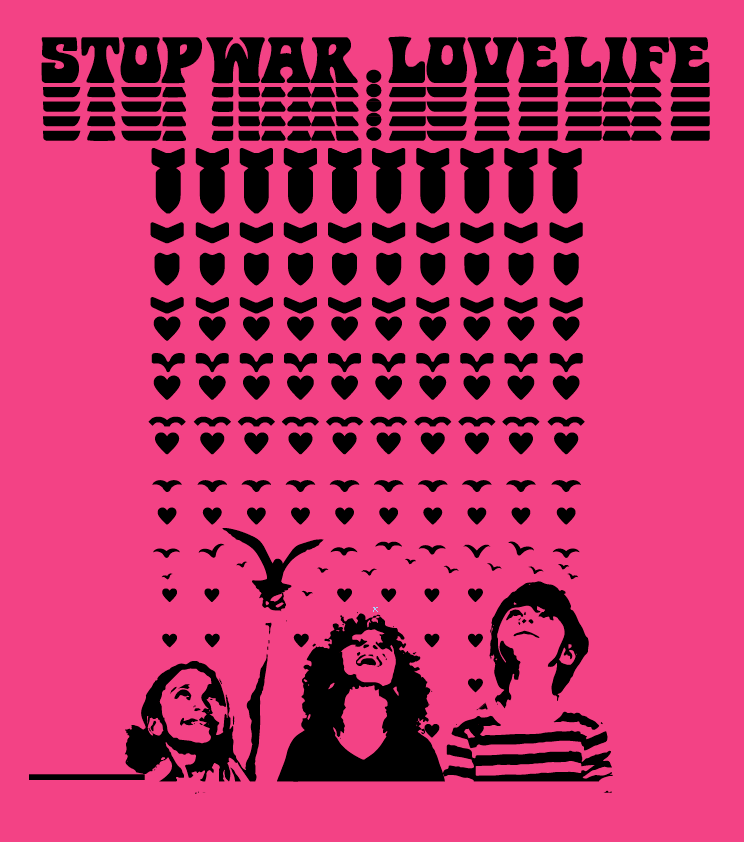
Social and digital assets
Research: Psychedelic Art & Moscoso’s Animated Posters
History of Graphic Design, Liberty University, Project and Essay By Firas Bachi
A Drug or an Art Movement
“Psychedelic” word used to describe a drug and an art movement in 1960s and 1970s, that word was associated with the spirit of the young generation, the hippie movement that was protesting war dreaming of a better peaceful world where “all the people are Sharing all the world”, their freedom, and even sometimes, their state of mind and visual hallucinations.
That word used to carry meanings way larger than just an experience of psychedelic drugs and hallucinations, or a few rock concerts that inspired the San Francisco psychedelic art movement. In a long article tells the history of Psychedelic art titled “Psychedelic Art – An Exploration of the Psychedelic Aesthetic in Art” on “Art in Context” website they explained:
“The term ‘Psychedelic’ was conceived by British psychologist Humphry Osmond after his extensive work with psychedelic drugs. Osmond stated that the word was used to imply a type of “mind manifesting” that occurred after the consumption of drugs, with his term going on to represent the emotions felt after viewing psychedelic artworks. Psychedelic is also a concept derived from the Ancient Greek words “psychē”, meaning “soul” and “dēloun” which means “to reveal.”
The Psychedelic excessive colors were used for the Artworks of that period used to emphasize the distorted and surreal qualities; they were tough enough to depict the work inside the mind. That art spread across many mediums besides rock music, album covers, and concert posters, it included murals, comic books, TV commercials, and many other forms of communication, the common characteristic of these art pieces was the swirling patterns of color that evoked LSD illusions, as described on Medical News Today website:
“LSD can trigger a range of perceptual changes, often relating to vision, touch, emotions, and thinking. Visual effects include brightened, vivid colors, blurred vision, distorted shapes and colors of objects and faces, and halos of light.”
The discovery and development of psychedelics by Albert Hofmann in 1943, and the acceptance of the new form of trippy art into art communities allowed artists and poets to explore and join the trend. Artworks was standing for more than visual representations of artists’ hallucinatory experiences, with several styles and techniques.
While many associate Psychedelic Art with drugs and rock concerts, this art form was present before psychedelic rock even appeared on the music scene as argued on Art in Context website.
Psychedelic Artistic Style Inspiration
The concept of Psychedelic art wasn’t standing against war, gender inequality, or corporations only, it was a rebellion against the prevailing style of visual communication back then. The artistic style was heavily inspired by Art Nouveau, which rebelled against the Industrial Revolution in the 1800s, the Psychedelic aesthetic applied the concept of rebellion within artworks created and disputed the military-industrial complex of the 1960s. Moreover, Psychedelic aesthetics is associated with other iconic genres like Op-Art, Pop art, and Surrealism. Op-Art influenced Psychedelic Art, the style exploited the basics of optics and illusions, made artworks look vibrant and animating. The Pop Art movement also influenced Psychedelic art, by promoting commodity and mass-producing identical popular images. The irony is that the term “psychedelic” was distorted, so many companies started to join the ride of the Psychedelic craze to pitch their products. The Psychedelic Art movement was widely incorporated by mainstream commercials by the mid-1970s, which integrated the exact capitalism system that the hippie movement was against.

Wes Wilson, Captain Beefheart, 1966, color lithograph, Smithsonian American Art Museum, 19 x 13 3⁄4 in. (48.3 x 34.9 cm),
Victor Moscoso (b.1936)
The Spanish artist that is best known for his psychedelic rock posters, ads, the “Underground Comix” in San Francisco in the 1960s and 1970s. Moscoso was the first Psychedelic artist to use multiple distinctive photographic collages. His most popular works include Big Brother and the Holding Company and The Chambers Brothers. Though his artworks gained world attention at the Summer of Love event in 1967. What made Moscoso’s art unique is the vibrating colors, though his vibrant electric colors that seemed to vibrate on the rock concert posters, Moscoso achieved the distinctive Psychedelic aesthetic captured by that movement.
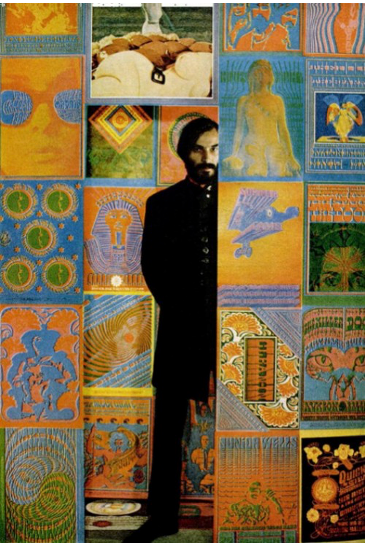
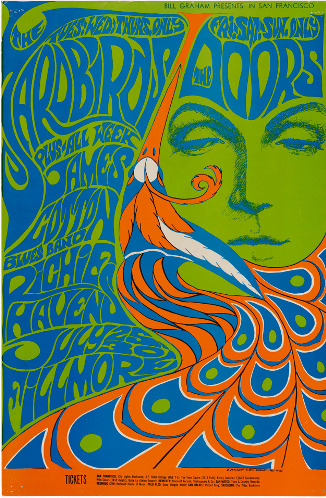
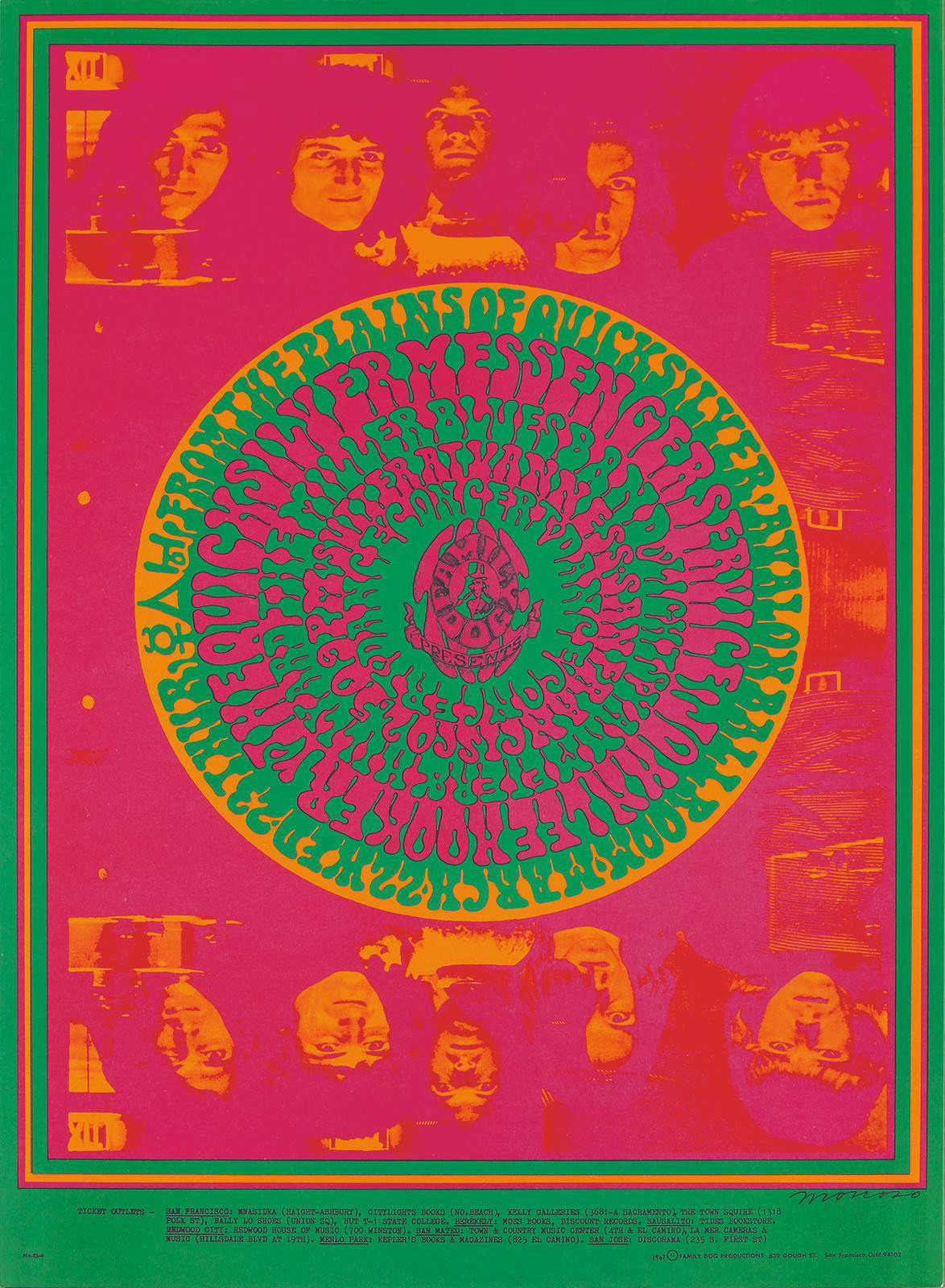

Victor Moscoso with his posters. Left to right:
- The Doors Concert, 1967 Color lithograph
- Plains of Quicksiver" 1967 Color lithograph
- God's Eye, Big Brother & the Holding Company, Charlatans, Blue Cheer, March 31 - April 1, Avalon Ballroom, Publisher: Family Dog 1967 Media:Color Offset Lithograph Poster 508 x 355 mm (20 x 14 in.) The Summer of Love Experience: Art, Fashion, and Rock and Roll de Young, Herbst Galleries, April 8 to August 20, 2017
-Junior Wells and His Chicago Blues Band, 1966
Moscoso Learns From Albers
A son of an immigrant Spanish family grew up in Brooklyn and went to the High School of Industrial Art in Manhattan. Moscoso practiced in commercial art for months before joining college at Cooper Union for the Advancement of Science & Art, he learned color theories of Josef Albers (1888-1976). Moscoso then transferred to Yale University’s School of Art in 1957 where he studied under Albers, earning his Bachelor of Arts degree in 1959. He then moved to Berkeley and enrolled in the San Francisco Art Institute, where he studied painting, learned lithography and earned a master’s degree in 1961. He would later teach at the Institute from 1966 to 1972. According to “Meggs: the only major artist of the movement with formal art training”
Josef Albers (1888-1976)
Moscoso & The Big Five
Moscoso was inspired by a poster of Wes Wilson (b. 1937), Moscoso showed his work to the Family Dog concert promoter Chet Helms to get commissioned to design weekend concerts posters featuring the Big Brother and the Holding Company music band. Moscoso continued learning from the posters of artist of the same movement, Wes Wilson, Stanley Mouse, and Alton Kelley, while forgetting all the graphic design academic rules he learned and did the total opposite, in unreadable text and clashing colors. After the success of the white-red-and-blue poster with spirals. Moscoso entered an arrangement to create posters and keep ownership of his posters. From 1966 to 1970, Moscoso created more than 100 posters. He and Wilson, Griffin, Mouse, Kelley became the Big Five of poster design.
Big Five San Francisco poster artists: Alton Kelley (left), Victor Moscoso, Rick Griffin, Wes Wilson and Stanley Mouse.Photo: Bob Seideman / Courtesy Fine Arts Museums of San Francisco / Bob Seidemann / Courtesy Fine Arts Museums of San Francisco
Photograph Source: https://www.seekpng.com/ima/u2e6a9y3i1u2i1i1/
Work Cited:
-Meggs, Philip B, Alston W. Purvis, and Philip B. Meggs. Meggs' History of Graphic Design. , 2006. Print.
-Davis, Kathleen FNP, The effects and hazards of LSD, Medical News Today website, June 22, 2017,
-Victor Moscoso, Fine Arts Museums of San Francisco,
-Psychedelic Art – An Exploration of the Psychedelic Aesthetic in Art, Art in Contex,